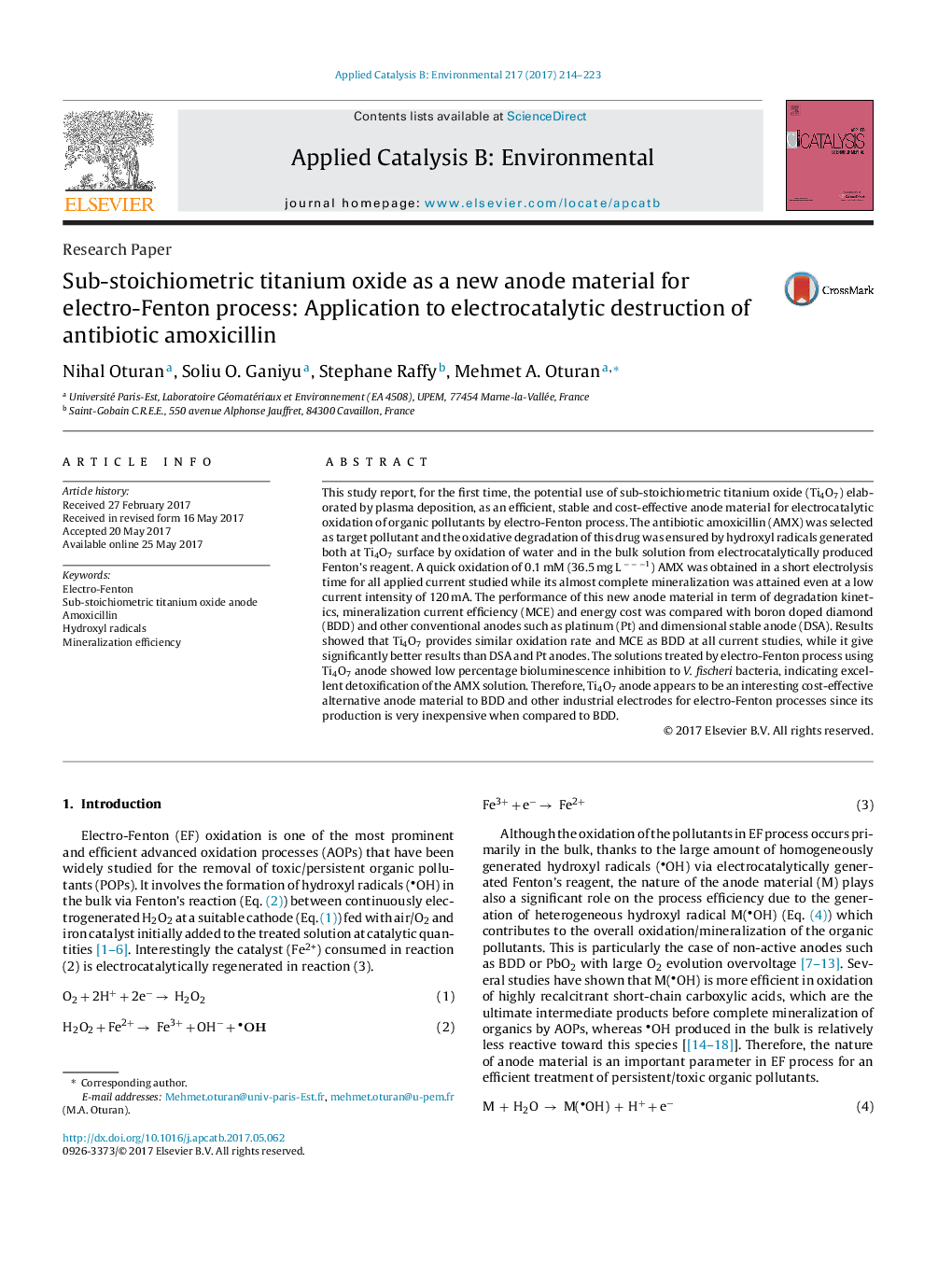| کد مقاله | کد نشریه | سال انتشار | مقاله انگلیسی | نسخه تمام متن |
|---|---|---|---|---|
| 6453940 | 1418803 | 2017 | 10 صفحه PDF | دانلود رایگان |
- First use of sub-stoichiometric titanium oxide Ti4O7 as anode for electro-Fenton process.
- Significantly better mineralization rate with Ti4O7 compared to either DSA or Pt anodes.
- Fast electro-oxidation and almost complete mineralization of antibiotic amoxicillin.
- Ti4O7 exhibits oxidation/mineralization efficiencies close to the BDD anode.
- Ti4O7 appears as an interesting cost-effective alternative to BDD anode.
This study report, for the first time, the potential use of sub-stoichiometric titanium oxide (Ti4O7) elaborated by plasma deposition, as an efficient, stable and cost-effective anode material for electrocatalytic oxidation of organic pollutants by electro-Fenton process. The antibiotic amoxicillin (AMX) was selected as target pollutant and the oxidative degradation of this drug was ensured by hydroxyl radicals generated both at Ti4O7 surface by oxidation of water and in the bulk solution from electrocatalytically produced Fenton's reagent. A quick oxidation of 0.1 mM (36.5 mg L ̶1) AMX was obtained in a short electrolysis time for all applied current studied while its almost complete mineralization was attained even at a low current intensity of 120 mA. The performance of this new anode material in term of degradation kinetics, mineralization current efficiency (MCE) and energy cost was compared with boron doped diamond (BDD) and other conventional anodes such as platinum (Pt) and dimensional stable anode (DSA). Results showed that Ti4O7 provides similar oxidation rate and MCE as BDD at all current studies, while it give significantly better results than DSA and Pt anodes. The solutions treated by electro-Fenton process using Ti4O7 anode showed low percentage bioluminescence inhibition to V. fischeri bacteria, indicating excellent detoxification of the AMX solution. Therefore, Ti4O7 anode appears to be an interesting cost-effective alternative anode material to BDD and other industrial electrodes for electro-Fenton processes since its production is very inexpensive when compared to BDD.
139
Journal: Applied Catalysis B: Environmental - Volume 217, 15 November 2017, Pages 214-223
